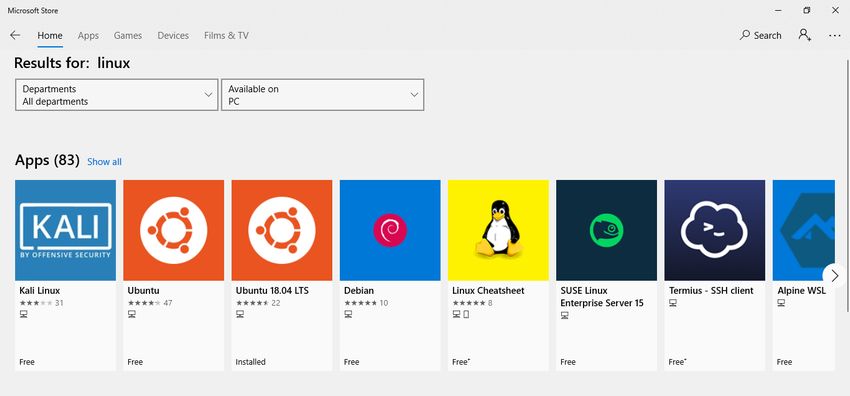

- #Is there a mac equivalent to windows subsystem for linux driver
- #Is there a mac equivalent to windows subsystem for linux windows 10
- #Is there a mac equivalent to windows subsystem for linux code
Even the ridiculous cmd.exe was heavily upgraded to the 21st century. Yes, as promised almost anything you can do in a native Ubuntu 16.04 can be done in this new environment. OSS has pros and cons, just like everything else.īut I digress, going back to WSL.

It's again, a matter of taste and ego, most of the time for most of the people.Īnd the OSS community still wastes an insurmountable amount of time in crazy disputes over stuff like the Systemd controversy or the time it is taking to get over X and finally get into Wayland. RedHat enjoyed the craze of the dot-com era and was able to fly high in the Enterprise market. Canonical has prevailed where many failed but they are still not a definitive winner, and it feels like their losing their steam. But each major distro was able to brute force their own ecosystems. No ecosystem can evolve healthily and in a cohesive way being that fragmented. Linux-distros had their own ups and downs. And by being able to reboot the entire ecosystem from scratch is not something anyone can do. Remains to be seen.Īpple had its miracle in the turn of the century, and OS X and iOS are terrific OSes. Maybe we're a couple of upgrades away from a really usable WSL.

#Is there a mac equivalent to windows subsystem for linux windows 10
Windows 10 is a return to form, and 2 big iterations later, it's finally becoming reasonable again. Microsoft had a really harsh decade in the turn of the century. That being said, WSL in itself is a miracle, so I can't complain. It is and will remain a maintenance nightmare of epic proportions. Apple could do it in a time when the Mac installed base was tiny, so alienating some people wouldn't hurt so much.
#Is there a mac equivalent to windows subsystem for linux driver
In an ideal world, Windows should replace its entire NT underpinnings and either build their own BSD-inspired infrastructure (like Darwin) or create their own Linux distro using off-the-shelf Linux kernel as the main driver (probably can't because of GPL).īut this is unrealistic. TL DR it's not nearly as smooth as running a pure Linux-distro, and the integration is not nearly as good as OS X in terms of usability as Windows was not redesigned in any meaningful way to be a UNIX system like OS X. This is a sight to behold: native GNOME-VIM running natively side-by-side with Microsoft Edge loading a web site running out of a Rails app running within WSL, accessing PostgreSQL.īut, is it good for real people? How good is WSL? Take a good look at the screenshot above. It is a technical tour de force in itself.
#Is there a mac equivalent to windows subsystem for linux code
Unlike in OS X where we need to tweak source code and recompile to run on Darwin (the Mach/BSD-based operating system layer), we can download Ubuntu binaries (or any other distro for that matter, there are Fedora and Suse coming soon to the Windows App Store) and run them directly.Įven more interesting, you can run system level daemons (yes, Postgresql, Memcached, Redis, etc all load and run in the background) and you can even run X (GUI) programs!ĭon't get me wrong, I commend everybody that is working hard at Microsoft to make this happen. It's enabling Windows to boot ELF64 binaries up directly, without recompilation, without modification. The kicker is that there is no Linux kernel running! It also wraps Windows services such as filesystem, networking, into appropriate devices that Linux can access.

In a nutshell, WSL wraps the Windows kernel system calls and maps them as Linux Kernel system calls, fooling ELF64 unmodified Linux compatible binaries to run as if they were on a real Linux-based system. If you're unaware of what the WSL is, I highly recommend that you read the articles at Microsoft's Developer Blog and Jessie Frazelle's awesome Windows for Linux Nerds blog post.


 0 kommentar(er)
0 kommentar(er)
